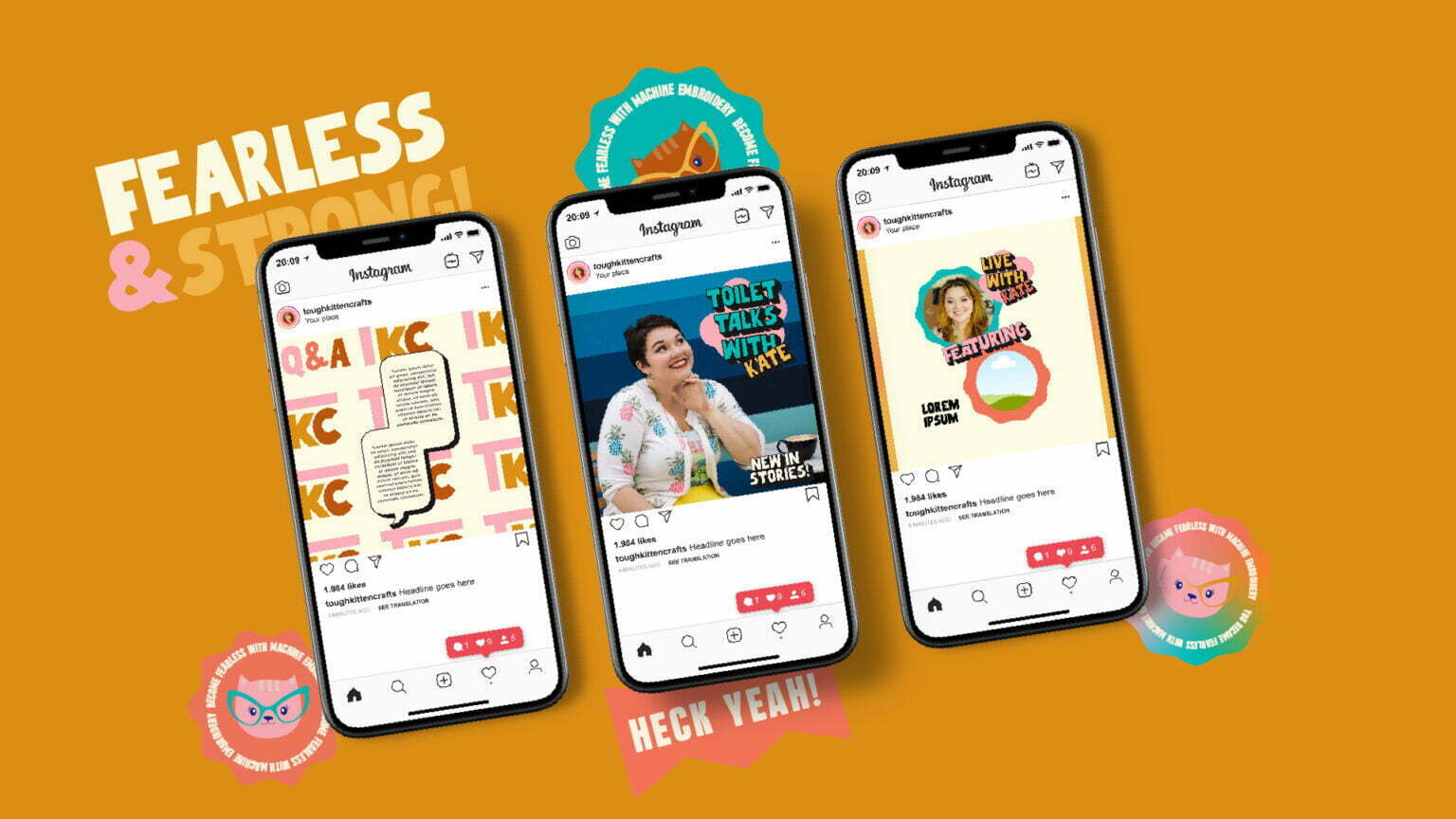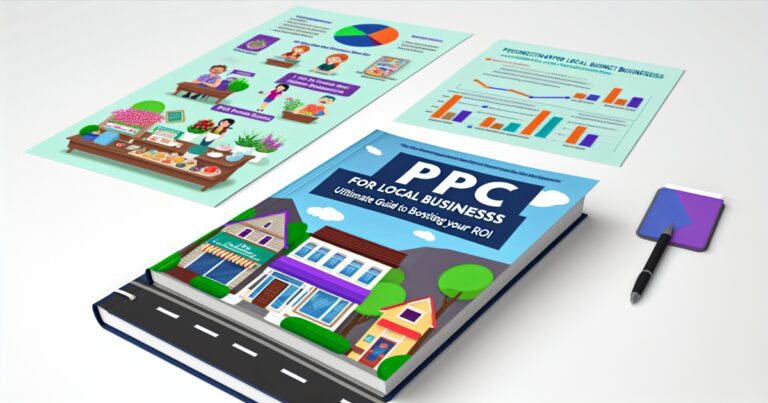The Importance of Getting Clients for Your Graphic Design Business
As a graphic designer, you may have an impressive range of skills and experience, but without clients to work with, your business cannot thrive. Whether you’re a freelancer or part of a design agency, building a solid client base is crucial for the success of your business. The more clients you have, the more opportunities you’ll have to showcase your creativity and develop your skills.
Moreover, by working with different types of clients on diverse projects, you’ll gain valuable insights into the needs and preferences of different target markets. To attract new clients for your graphic design business, it’s essential to have a plan in place.
In this article, we’ll explore some effective strategies that will help you build relationships with potential clients and grow your client base. From identifying your target audience to providing excellent customer service after completing each project, we’ll provide practical tips that will help you establish yourself as a reliable and skilled graphic designer.
A Brief Overview of the Steps to Follow
Before diving into specific strategies for acquiring new clients for your graphic design business, it’s helpful to have an overview of what lies ahead. There are several steps involved in building a solid client base: Firstly, it’s important to define your target audience – who are the people or businesses that would benefit most from hiring you?
Once you’ve identified them, research their needs and preferences so that you can tailor your approach accordingly. Secondly, build a strong portfolio that showcases your best work – this is often the first thing potential clients will look at when considering working with you.
Thirdly,networking is key – attend industry events and conferences; join online communities related to graphic design; collaborate with other professionals in complementary industries. Fourthly , market yourself effectively- develop a strong brand identity; utilize social media platforms effectively; offer promotions or discounts attract new clients.
Provide excellent customer service – communicate clearly with clients about project expectations, timelines, and budgets; be responsive to client feedback and concerns; deliver high-quality work on time. In this article, we’ll delve into each of these steps in detail, providing actionable tips that will help you build a successful graphic design business.
Define Your Target Audience
Identify your ideal client
When looking for clients for your graphic design business, it is important to first identify who your ideal client is. This can be done by taking a step back and analyzing the type of work you most enjoy doing, as well as the type of clients you have worked with in the past.
Consider factors such as age range, industry, company size, and location. Once you have a good idea of who your ideal client is, you can then start to tailor your marketing efforts towards them.
Research your target audience’s needs and preferences
Once you have identified your ideal client, it is important to research their needs and preferences. This can be done through surveys or by simply asking questions during initial consultations.
Find out what types of designs they are drawn to and what their goals are for their project. Understanding their needs will allow you to create designs that meet their expectations.
Determine where your target audience spends their time online and offline
Once you have identified your ideal client and researched their needs and preferences, the next step is to determine where they spend their time both online and offline. This information will help you focus on specific marketing channels that will reach them most effectively. For example, if your target audience spends a lot of time on Instagram, then focusing on developing a strong presence on that platform might be beneficial for generating leads.
Overall, defining your target audience requires careful consideration and research into their needs, preferences, behaviors, and demographics in order to effectively market your services towards them. By understanding who they are as consumers of design services- from how they think about branding down to which social media platforms they favor- designers can refine strategies accordingly in order to best align digital marketing with targeted sales efforts needed throughout our industry.
Build a Strong Portfolio
Showcase your best work in an online portfolio
As a graphic designer, one of the most important things you can do to attract clients is to build a strong portfolio that showcases your best work. Your portfolio should be easy to navigate and visually appealing, with clear descriptions of each project.
You can create an online portfolio using platforms like Behance or Dribbble, or you can build your own website. When selecting projects to include in your portfolio, choose pieces that demonstrate your range and versatility as a designer.
Don’t just focus on one specific style or aesthetic; show potential clients that you are capable of adapting to their unique needs. Be sure to include a mix of both personal and professional projects, as this will give clients a better sense of who you are as both an artist and business professional.
Highlight projects that align with your target audience’s needs
Another important factor when building your design portfolio is highlighting projects that align with the needs of your target audience. This means understanding the specific challenges and goals faced by individuals or companies in the industries you want to work with, and tailoring your work accordingly.
For example, if you specialize in branding design for small businesses, be sure to showcase previous projects where you’ve successfully created identity systems for similar companies. If you’re interested in working with nonprofits or social impact organizations, highlight past work where you’ve helped promote social causes through design.
Provide case studies and testimonials from satisfied clients
In addition to showcasing your best work, it’s also important to provide evidence of successful past projects through case studies and testimonials from satisfied clients. Case studies provide potential clients with more detailed information about how a particular project was executed—from problem identification and conceptualization through execution—and how it ultimately benefited the client. Testimonials offer another dimension by providing insight into what it’s like to work with you as a designer.
Ask past clients if they’d be willing to provide a brief quote or written review of their experience working with you, and include these testimonials prominently on your portfolio page. This will help build trust and credibility with potential clients, and give them added confidence in your skills and abilities as a designer.
Network and Collaborate
Attend Industry Events and Conferences
As a graphic designer, attending industry events and conferences can be an excellent way to network with potential clients, collaborators, or peers. These events provide opportunities to showcase your work, exchange ideas with other professionals in the field, and possibly even land new clients.
When attending events or conferences, it is essential to come prepared. Bring business cards and samples of your work to give to potential clients or collaborators.
Research the event beforehand to determine which sessions or workshops will be most relevant to your business needs. At these events, don’t be afraid to strike up conversations with other attendees.
Ask them about their experiences in the industry and share your own insights. The more you can connect with others in your field, the more opportunities you’ll have for collaboration and building a stronger network.
Join Online Communities and Forums Related to Graphic Design
In addition to attending industry events in person, joining online communities and forums related to graphic design can also be an effective way of expanding your network. These forums provide a platform for designers from all over the world to share their work, ask questions about techniques or tools, offer advice on client management or project scope, or simply discuss current trends in design. When joining these communities or forums, it is important not only to participate but also to contribute positively.
Share insights on projects that interest you; offer constructive feedback on other designers’ work; engage consistently so that people begin noticing your name regularly. These online groups may also post job listings for freelance designers looking for new opportunities – another avenue for potential work.
Collaborate with Other Professionals in Complementary Industries
Collaborating with professionals from complementary industries – e.g., web developers/programmers could lead graphic design projects due as well as referral traffic across both businesses. For example, a graphic designer might partner with a web developer to offer a combined package of web design services.
Similarly, designers could partner with content writers or marketers to offer complete branding packages. When seeking out collaborations, look for professionals who have complementary skills and can bring something unique to the table.
Reach out to them about potentially partnering on projects or offering combined services. Networking and collaborating are essential strategies that graphic designers can use to build their businesses.
By attending industry events and conferences, joining online communities and forums related to graphic design, as well as collaborating with other professionals in complementary industries – designers can increase their chances of meeting potential clients or collaborators. Through these connections and partnerships, they are more likely to have long-term success in this field.
Market Your Business Effectively
Develop a Strong Brand Identity for Your Business
In a crowded market, developing a strong brand identity can help your graphic design business stand out. A brand identity is the visual representation of your business and includes elements such as your logo, color scheme, typography, and overall design aesthetic.
It should convey the personality and values of your business while also appealing to your target audience. To develop a strong brand identity, start by defining your unique selling proposition (USP).
What sets you apart from other graphic designers? Use this as the foundation for developing your brand identity.
Choose colors, fonts, and other design elements that align with your USP and appeal to your target audience. Consistency is key – make sure all of your branding materials are cohesive and recognizable across all platforms.
Utilize Social Media Platforms to Reach Potential Clients
Social media platforms are an effective way to reach potential clients for your graphic design business. Start by identifying which platforms are most popular among your target audience – for example, Instagram is popular among younger demographics while LinkedIn may be more effective for reaching professionals in certain industries such as finance or law. Create engaging content that showcases your expertise in graphic design while also appealing to potential clients.
Share examples of previous work or case studies that demonstrate successful outcomes for clients. Use hashtags relevant to the industry or type of work you specialize in – this will help potential clients find you through social media searches.
Offer Promotions or Discounts to Attract New Clients
Offering promotions or discounts is a great way to attract new clients to your graphic design business. This can help incentivize potential clients who may be hesitant about investing in professional graphic design services. Consider offering special discounts on first-time projects or package deals for ongoing projects.
Make sure to clearly communicate the terms and conditions of any promotions or discounts – for example, the amount of the discount, when it expires, and any restrictions or limitations. This will help ensure a positive client experience while also attracting new business to your graphic design company.
Provide Excellent Customer Service
Customer service is the backbone of any business, and graphic design is no exception. Providing excellent customer service will help to establish a good reputation for your brand and keep clients coming back for repeat business. Communicating clearly with clients about project expectations, timelines, and budget is crucial in ensuring that the project runs smoothly and without any hiccups.
Communicate Clearly with Clients
When working with clients, it’s important to establish clear expectations from the outset. This includes discussing project scope, timelines, and budget. Create a detailed contract or agreement that outlines all of these details so that both parties are aware of what’s expected of them throughout the project.
Be sure to address any concerns or questions that your client may have before starting work on the project so that you’re both on the same page. Once work has begun on the project, be sure to communicate regularly with your client to keep them updated on progress.
Let them know if there are any delays or issues that may come up during the course of the project. This will help to build trust between you and your client.
Be Responsive to Client Feedback and Concerns
Your clients will undoubtedly have feedback on your work throughout the course of a project. It’s important to listen carefully to their feedback and make changes as needed in order to ensure that they’re happy with the final product.
If a client has concerns or questions about anything related to their project, be sure to address them promptly. Responding quickly shows your clients that you value their time and respect their concerns.
Deliver High-Quality Work On Time
This may seem like an obvious point but delivering high-quality work on time is one of the most important aspects of providing excellent customer service. Be sure to set realistic deadlines for your projects and work hard to meet them.
If you’re running behind schedule, let your client know as soon as possible and be transparent about why there’s a delay. When delivering work, ensure that it meets the standards set out in your initial contract or agreement.
Check for errors or inconsistencies before sending the final product to your client. This will help to build trust with your clients and establish a reputation for delivering high-quality work on time.
By providing excellent customer service, you’ll be able to build strong relationships with clients and establish a good reputation for your brand. Communicate clearly, be responsive to feedback and concerns, and deliver high-quality work on time in order to ensure that clients keep coming back for repeat business.
Conclusion
Getting clients for your graphic design business is crucial for its success. By understanding your target audience, building a strong portfolio, networking and collaborating with other professionals in complementary industries, marketing your business effectively, and providing excellent customer service you can increase the chances of acquiring new clients.
Defining your target audience involves researching their needs and preferences while identifying where they spend their time online and offline. Building a comprehensive portfolio that showcases your best work aligning with potential clients’ needs is an essential part of attracting new customers.
Networking at industry events and collaborating with other professionals in complementary industries can help expand your reach while effectively marketing your business utilizing social media platforms or offering promotions to attract new clients. Delivering high-quality work on-time while communicating clearly with customers about project expectations, timelines, and budgets will establish a positive relationship for repeat business.
By utilizing these strategies and incorporating them into the company’s brand identity will ultimately lead to the continued growth of the graphic design business. Remember to stay passionate about what you do; success comes to those who are willing to put in the hard work!









